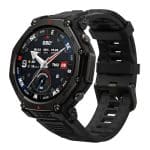
Amazfit T-Rex 3 Pro review: Serious tracking power wrapped in titanium
Amazfit T-Rex 3 Pro
The Amazfit T-Rex 3 Pro made its debut at IFA in Berlin in early September, and I’ve been wearing it every day since. Over the past few weeks, I’ve put it through its paces to see how it stacks up in real-world use. This review follows up on my hands-on test of the standard T-Rex 3, which I published almost exactly a year ago. The Pro version keeps the same rugged spirit but brings upgraded materials and some new features.
Is all this worth the extra $120 in price? Let’s find out.
Amazfit T-Rex 3 Pro: One minute review
The T-Rex 3 Pro is the most complete version of Zepp Health’s outdoor watch to date. It takes everything that worked in the T-Rex 3, tidies it up, throws in a few useful extras, and manages to feel more polished without losing that rugged charm. The titanium and sapphire upgrades make a difference, and the addition of a 44mm case finally gives people with smaller wrists a proper option.
Battery life is still excellent, even with the brighter display and extra features. You’re not going to be charging this thing every few days like some other smartwatches. The new BioCharge score adds a nice layer of day-to-day insight, and the LED flashlight turns out to be surprisingly useful once you start reaching for it. The speaker, maps and navigation tools round out a very capable package, especially for outdoor use.
It’s not perfect. The software feels a bit more stripped back compared to watches like the Balance, and the smart features don’t go toe-to-toe with Apple or Samsung. But the core experience is strong. Fitness tracking is accurate, the UI is smooth, and it gets the important stuff right. If you’re after a rugged watch with solid health tools, great battery life and some unique touches, the T-Rex 3 Pro is well worth a look.
At $399, it’s not exactly budget territory, especially with the regular T-Rex 3 often going for less. But it’s still about half of what you’d pay for a Garmin Fenix. And for that, you’re getting a well-built, fully featured outdoor watch that covers most of the same ground.
Amazfit T-Rex 3 Pro review: Design, hardware
Look & feel
The T-Rex 3 Pro doesn’t shy away from its rugged roots. It still looks like a watch built for the outdoors, with that chunky, angular design. But it also feels like a step up from the regular T-Rex 3. The titanium bezel and buttons give it a more premium finish, and the switch to sapphire glass makes it look sharper while adding a bit more durability. The build just feels tighter and better put together overall. If you found the T-Rex 3 a little too bulky, the addition of a smaller 44mm size might be just what you’ve been waiting for.
Despite its size, it wears lighter than you’d think. The 48mm Pro is only 52 grams, and the 44mm version drops even lower to 46.8 grams. That’s a noticeable difference on the wrist, especially when you’re moving around or heading out for a run. The polymer case keeps it light, and the titanium helps it take a beating without turning into a brick. It stays comfortable and secure without shifting around and that helps with sensor accuracy too.
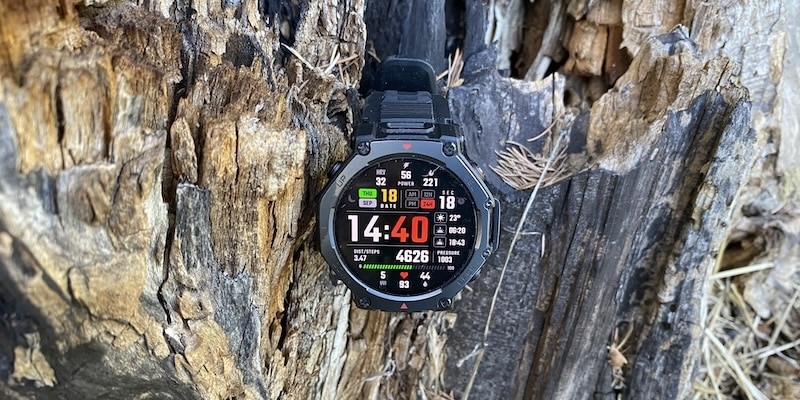
Water resistance hasn’t changed – you still get 10 ATM plus scuba support up to 45 meters – but the display has been upgraded. It’s bright, crisp and easy to read even in direct sun. The 1.5-inch AMOLED on the 48mm version and 1.32-inch on the 44mm both pump out 3,000 nits of brightness. That’s a jump over the standard T-Rex 3. Colors pop, text is razor sharp and there’s even a night mode to tone things down when it gets dark.
The physical buttons are back, and they’re just as clicky and reliable. You’ll use them a lot, especially since the screen locks during workouts and needs a button press to wake. It’s occasionally annoying if you want to swipe through stats mid-run, but it avoids accidental touches.
And then there’s the flashlight – one of those features you don’t think you need until you do. It’s an actual LED on the case, not just a screen trick, and it works great for trail runs, power cuts or finding your way through a dark room without waking anyone. But more on that later.
The strap is soft and easy on the skin and thankfully this time around it’s a quick-release system. You won’t need a screwdriver or adapter like you did with the older model. All in all, the T-Rex 3 Pro looks and feels more refined than the standard version. It still leans rugged, but the extra polish makes it much easier to wear day-to-day. Even if you’ve got smaller wrists like mine, it somehow works.
Under the hood
Peeling back the rugged exterior of the Amazfit T-Rex 3 Pro reveals a capable hardware package. It runs on Zepp OS 5.0, which is a step up from the Zepp OS 4.5 currently found on the non-Pro model. The interface feels fluid and responsive, and transitions between menus are snappy. There’s no lag when launching apps or swiping through widgets, and the visuals benefit from the higher screen brightness and contrast of the new AMOLED panel.
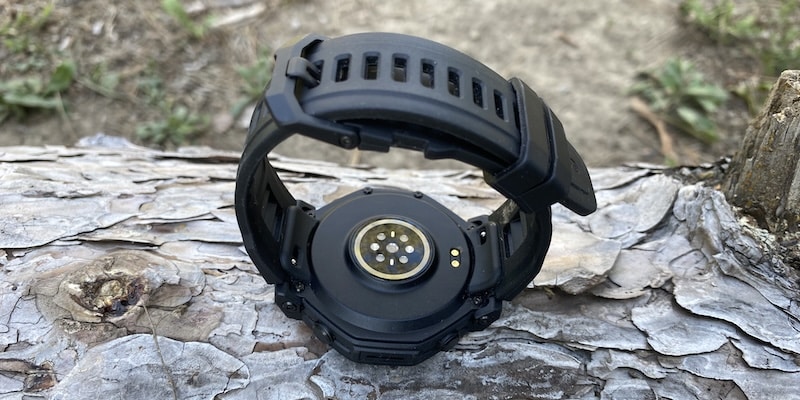
Like its predecessor, the Pro model is equipped with the BioTracker 6.0 PPG biometric sensor. It uses a 5PD + 2LED layout, so no change there. Alongside that, the usual sensor lineup returns: accelerometer, gyroscope, geomagnetic sensor, air pressure sensor, temperature sensor, and ambient light sensor. These work together to deliver sleep tracking, environmental readings and motion detection with a high level of granularity.
Another area that remains consistent is satellite support. You still get dual-band positioning and support for six GNSS systems, which helps with outdoor tracking accuracy.
The Pro, however, does include a proper speaker this time in addition to the microphone. To remind, the regular T-Rex 3 which only had a beeper. That allows for Bluetooth calling and audio alerts. Music storage is available too.
All in all, it’s a compact, capable setup that stays in line with what we’ve come to expect from Zepp Health’s higher-end builds.
Battery life
Another strong point for the T-Rex 3 Pro is battery life. The 48mm version keeps the same 700 mAh capacity found in the standard T-Rex 3, while the smaller 44mm model comes with a 640 mAh battery. Both are more than capable of getting you through extended use without daily charging.
During my time with the T-Rex 3 Pro, I tested it under typical conditions: daily activity tracking, overnight sleep monitoring and several GPS workouts. Even with all the bells and whistles switched on, the watch holds up well. Though as always, real-world results depend on settings like heart rate frequency, screen brightness and use of GPS. Firing up the LED often also increases the battery drain.
Zepp Health gives the following estimates for the 48mm T-Rex 3 Pro: up to 25 days in typical use, 10 days with heavy use, 37 hours in precision GPS mode and up to 82 hours in GPS battery saver mode. For the 44mm, typical use drops slightly to 19 days, and GPS time to 29 hours. These numbers seem realistic.
I’d add that your choice of watch face can also have a noticeable impact. While there are plenty of animated and third-party options available, I stuck with one of the stock Zepp Health faces to maximise efficiency. If you want the longest life between charges, that’s probably the way to go.
Amazfit T-Rex 3 Pro vs T-Rex 3: Technical specs comparison
The T-Rex 3 Pro feels like more than just a small upgrade. You’re getting better build quality, a brighter display, proper navigation tools, a built-in flashlight and smarter recovery tracking with BioCharge. The addition of two case sizes also makes it more accessible for smaller wrists.
At $399, it’s not an insignificant jump from the T-Rex 3’s $279, especially with discounts on the older model. But the improvements are clear. If you want a rugged watch that pushes beyond the basics without stepping into Garmin pricing, the Pro version makes a strong case for itself.
Feature | T-Rex 3 Pro 48mm | T-Rex 3 Pro 44mm | T-Rex 3 |
|---|---|---|---|
Launch date | September 2025 | September 2025 | September 2024 |
Dimensions | 48 × 48 × 14 mm | 44.8 × 44.8 × 13.2 mm | 48.5 × 48.5 × 13.75 mm |
Display Size | 1.5 inch AMOLED | 1.32 inch AMOLED | 1.5 inch AMOLED |
Display Resolution | 480 × 480 pixels | 466 × 466 pixels | 480 × 480 pixels |
Brightness | Up to 3000 nits | Up to 3000 nits | 2000 nits |
Display Protection | Sapphire crystal glass | Sapphire crystal glass | Corning Gorilla Glass |
Build | Grade 5 titanium alloy bezel and buttons, fiber-reinforced polymer case | Grade 5 titanium alloy bezel and buttons, fiber-reinforced polymer case | Stainless steel bezel and buttons, fiber-reinforced polymer case |
Buttons | 4 | 4 | 4 |
Strap attachment | 22mm Quick Release | 20mm Quick Release | 22mm Special Tool |
Weight (without strap) | 52 grams | 46.8 grams | 68.3 grams |
Water Resistance | 10 ATM, 45m freediving & scuba certifications | 10 ATM, 45m freediving & scuba certifications | 10 ATM, 45m freediving certification |
Flashlight | Dual-color LED with adjustable brigthness, 200-lux white light, low-interference red light, SOS signal mode, and a 300-lux Boost Mode. | Dual-color LED with adjustable brigthness, 200-lux white light, low-interference red light, SOS signal mode, and a 300-lux Boost Mode. | No |
Satellite Systems | Dual-band GPS, 6 GNSS systems | Dual-band GPS, 6 GNSS systems | Dual-band, 6 satellite systems |
Navigation | Base Maps, Contour, Ski Resort, Turn-by-Turn, POI Search, Route Planning, Round-Trip, Auto Rerouting | Base Maps, Contour, Ski Resort, Turn-by-Turn, POI Search, Route Planning, Round-Trip, Auto Rerouting | Base Maps, Contour, Ski Resort, Turn-by-Turn |
Microphone & Speaker | Yes | Yes | Microphone only |
Bluetooth Calling | Yes | Yes | No |
Connectivity | Bluetooth 5.2 BLE, Wi-Fi 2.4GHz | Bluetooth 5.2 BLE, Wi-Fi 2.4GHz | Bluetooth 5.2 BLE, Wi-Fi 2.4GHz |
NFC | Yes | Yes | Yes |
Music Storage | Yes | Yes | Yes |
Sensors | BioTracker 6.0 PPG biometric sensor (5PD + 2LED), 3-axis acceleration sensor, Gyroscope, Geomagnetic sensor, Air pressure sensor, Temperature sensor, Ambient light | BioTracker 6.0 PPG biometric sensor (5PD + 2LED), 3-axis acceleration sensor, Gyroscope, Geomagnetic sensor, Air pressure sensor, Temperature sensor, Ambient light | BioTracker 6.0 PPG biometric sensor (5PD + 2LED), 3-axis acceleration sensor, Gyroscope, Geomagnetic sensor, Air pressure sensor, Temperature sensor, Ambient light |
Sports modes | 180 | 170 | 170 |
BioCharge support | Yes | Yes | No |
Battery capacity | 700mAh | 640mAh | 700mAh |
Battery Life | Typical use: up to 25 days, heavy use: up to 10 days, precision GPS mode: 37 hours, GPS long battery life mode: 82 hours. | Typical use: up to 19 days, heavy use: up to 7 days, precision GPS mode: 29 hours, GPS long battery life mode: 80 hours. | Up to 27 days (typical), 13 days heavy, 40 days saver |
OS | Zepp OS 5.0 | Zepp OS 5.0 | Zepp OS 4.5 |
Colors | Tactical Black, Black Gold | Black Gold, Arctic Gold | Onyx, Lava, Gray |
Price (USD) | $399 | $399 | $279 |
Amazfit T-Rex 3 Pro review: Health & fitness tracking
The T-Rex 3 Pro includes all the expected health and fitness tracking tools: continuous heart rate, HRV, stress, sleep, daily steps, skin temperature and more. With the BioTracker 6.0 PPG sensor onboard, accuracy is pretty decent. Setup remains quick and easy thanks to the QR pairing process with the Zepp app. It’s all pretty seamless.
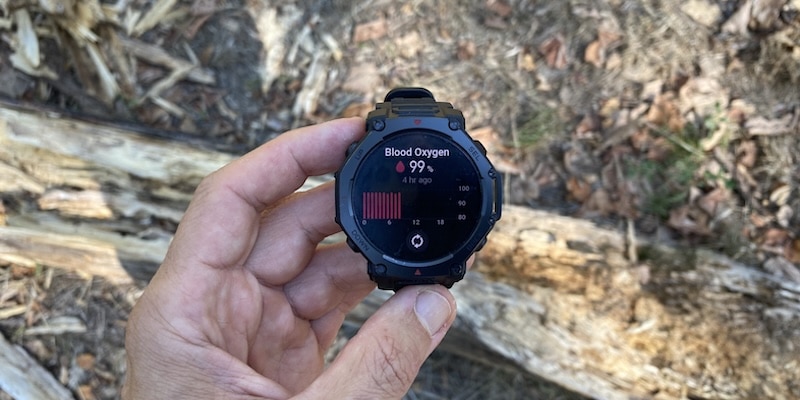
To get the most out of the health tracking, it’s worth spending a few minutes in the app adjusting settings. That includes things like boosting the heart rate sampling rate and enabling advanced monitoring options. You’ll get more detailed data in return, though at the cost of some battery life.
The way the software behaves on the T-Rex 3 Pro is a bit different from some other Zepp Health watches. You don’t get the full scrollable card layout like on the Balance. Swiping up on the T-Rex 3 Pro brings up a vertical stack of small info cards. Swiping right shows notifications, left opens the app list, and down gives you access to quick settings. On the Balance, swiping up takes you to notifications, swiping right shows the card stack, and swiping left lets you scroll through full-screen cards for features like Sleep Score, BioCharge, Calendar, PAI and Voice Memos. If you’re coming from a device like the Balance, the Pro’s interface might feel more stripped down, but it’s still functional and responsive.
As always, the smartphone app is the place to go for a detailed view of the stats. A few months ago it received a full revamp so that it now resembles a Whoop-like aesthetic.

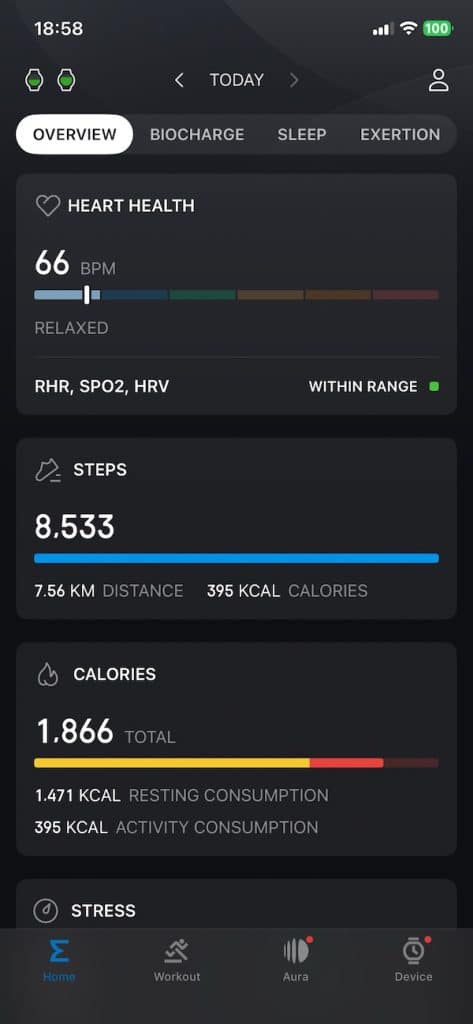
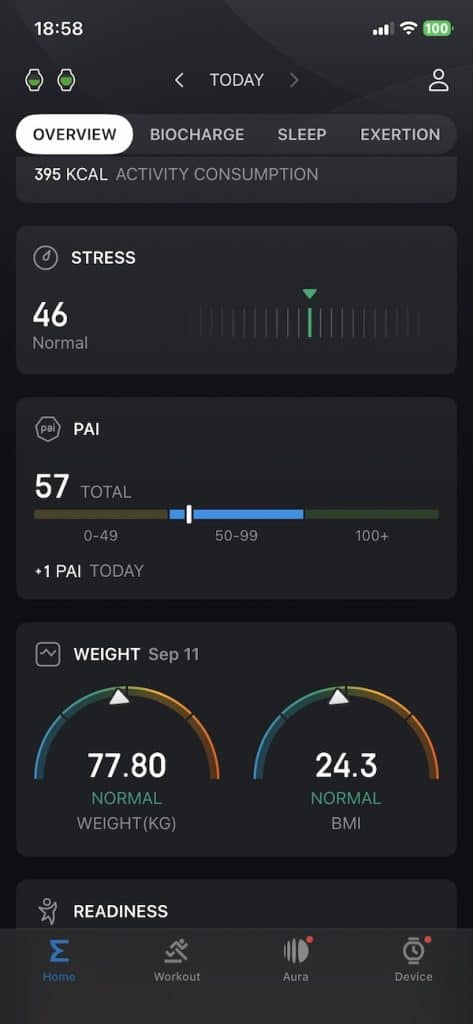
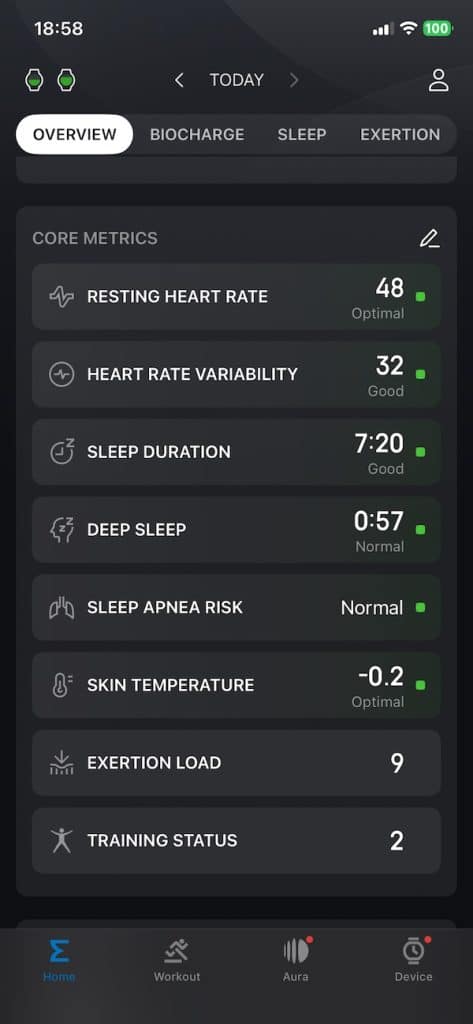
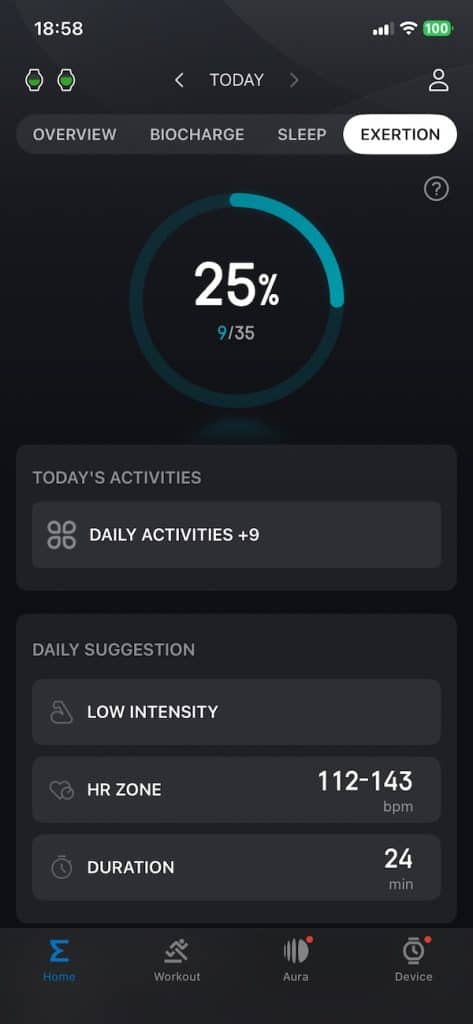
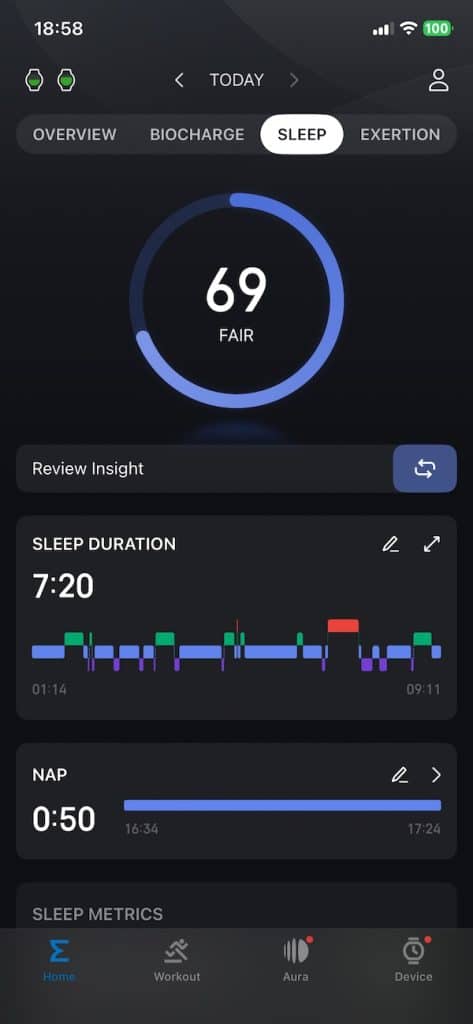
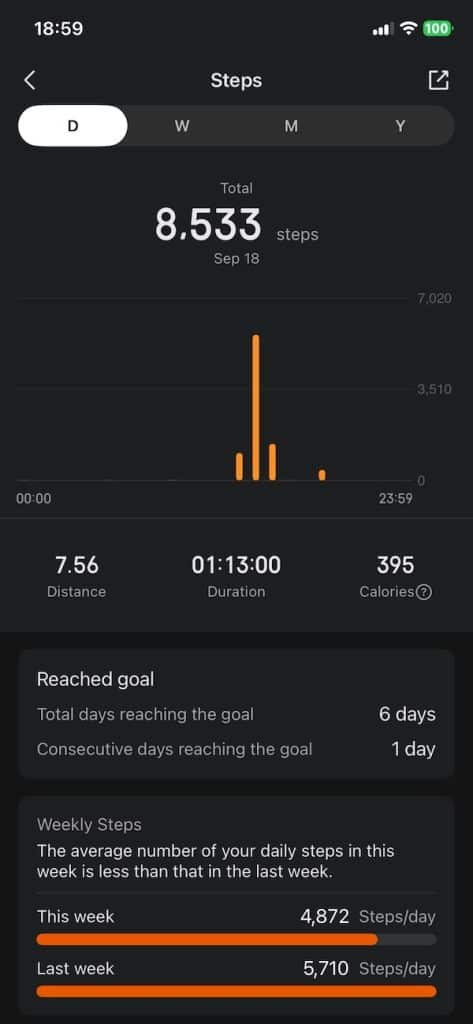
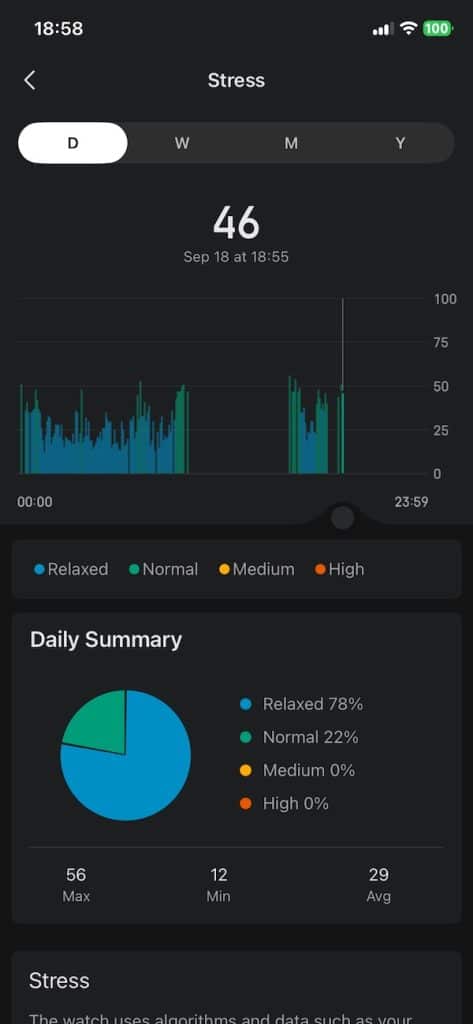
Biocharge
As part of that revamp we saw the introduction of BioCharge. It originally debuted on the Helio Strap and has since rolled out to a handful of other Amazfit watches. On the T-Rex 3 Pro it runs out of the box. Like Garmin’s Body Battery, the metric takes some time to settle in, but it’s a useful stat once it calibrates. Much more useful than the old Recovery Score.
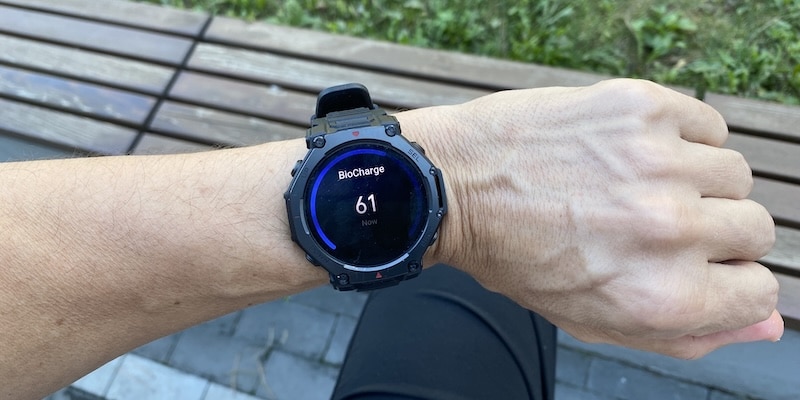
BioCharge is a continuous energy-tracking feature that shows how your body depletes and replenishes its energy throughout the day. The score relies on two primary components: Sleep Recharge and Daily Events. It visualises your energy in a way that makes it easy to see how restful sleep recharges your body and how stress, workouts or daily activity drain it. This isn’t a once-a-day metric. It adjusts in real time, giving a rolling picture of how you’re holding up across different moments of the day.
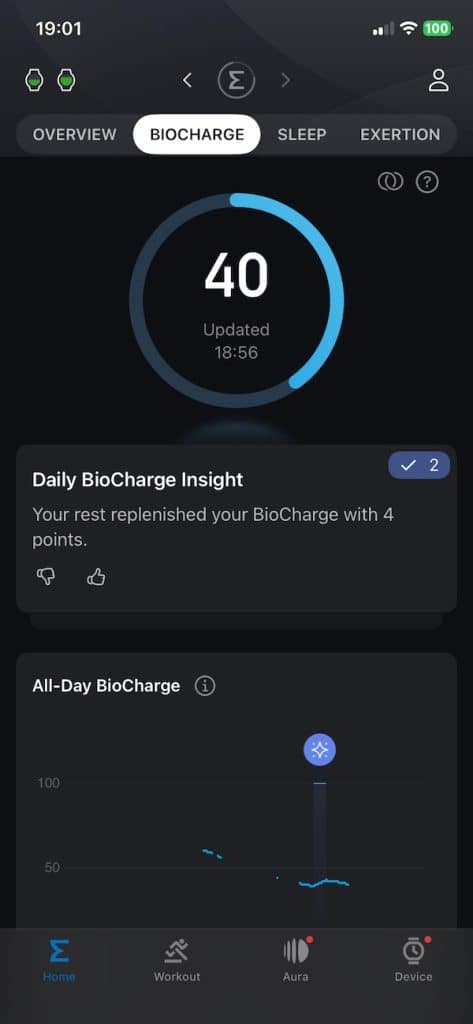

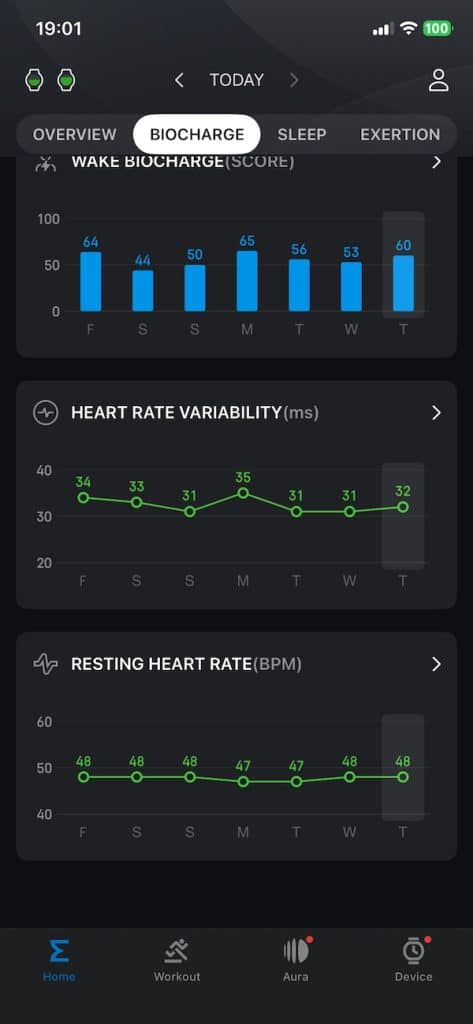
Sports tracking
The T-Rex 3 Pro comes with support for 180 sports modes, which is more than anyone realistically needs. Still, it’s good to have options. You can track everything from trail running to parkour, and it even supports scuba diving down to 30 meters, plus 10 ATM water resistance and 45-meter freediving.
But for me, it always comes back to running. That’s where I put every watch through its paces. If it can nail distance, heart rate and pacing across different runs, then I start paying attention. So I lined it up against my trusty Forerunner 955 and took them both out for a few sessions.
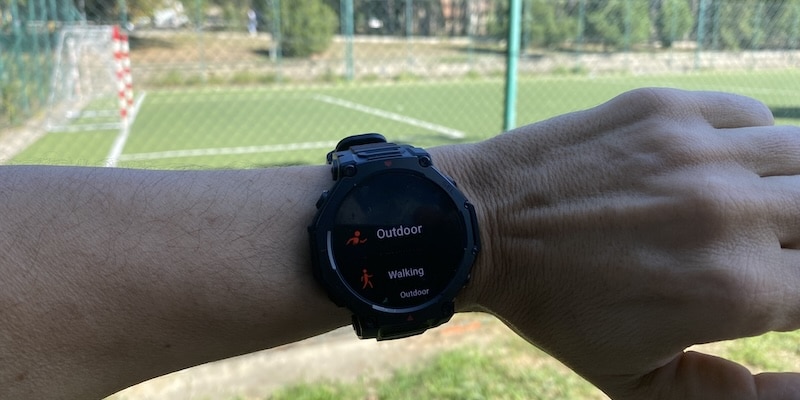
The Garmin has long been my benchmark for reliable running data. But when I tested it side by side with the new Amazfit T-Rex 3 Pro over multiple runs, I came away genuinely impressed. Despite its chunky 48mm build, the T-Rex 3 Pro felt light-weight on my wrist thanks to its titanium elements. The display is a 1.5 inch AMOLED that’s easy to read in bright sunlight It thing look like a rugged adventure tool, but this watch can definitely handle serious running.
Across three runs (3K, 5K and 7.5K), the Amazfit matched the Garmin Forerunner 955 almost step for step. GPS accuracy was consistently within a couple of meters. Average heart rate tracking was also strikingly close, with only a single bpm separating the two in most sessions, and identical max readings on several efforts. These results suggest that Zepp Health’s latest sensor upgrades are delivering the goods. For most runners, the data here will be more than accurate enough.
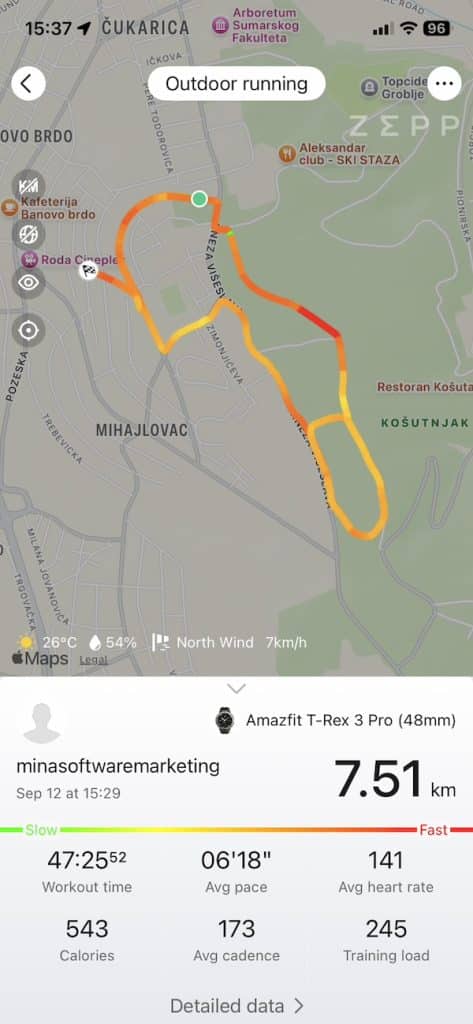
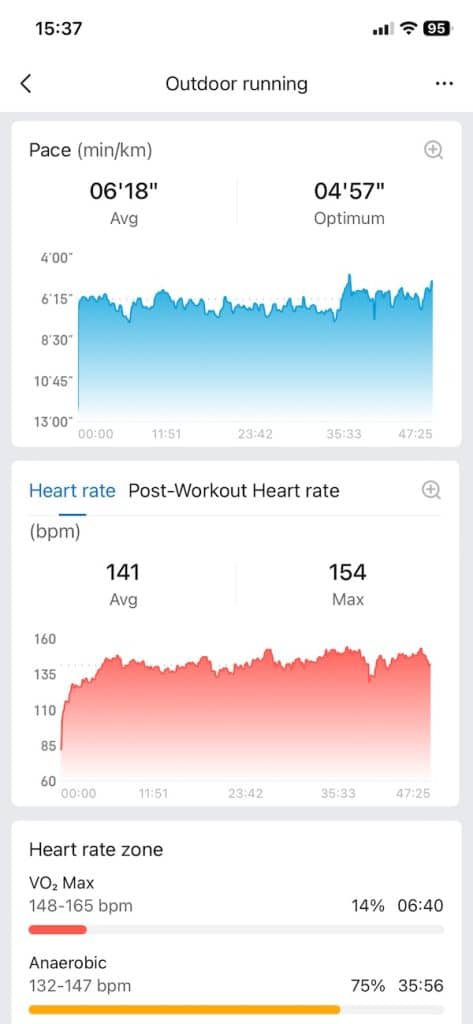
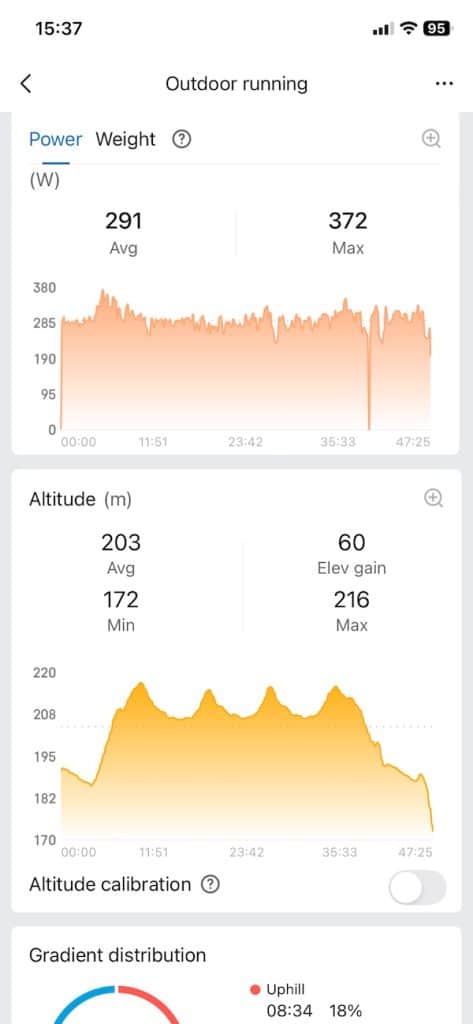
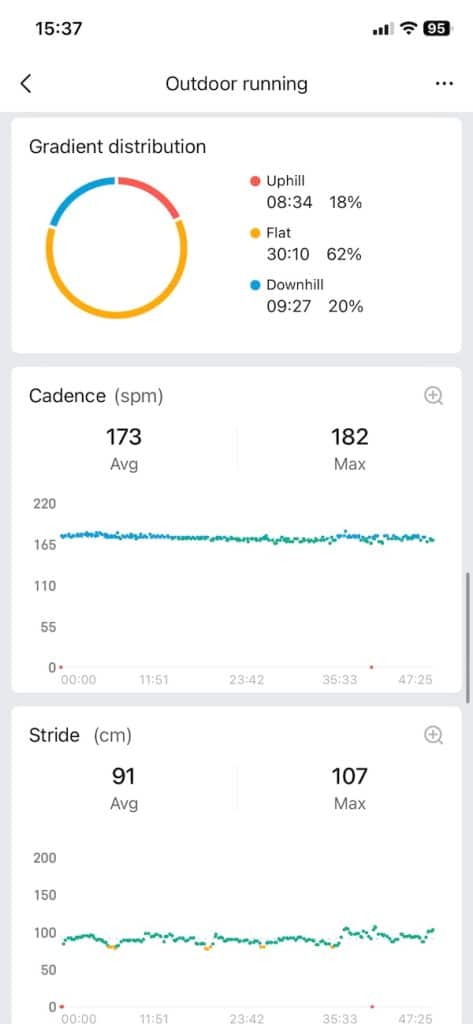

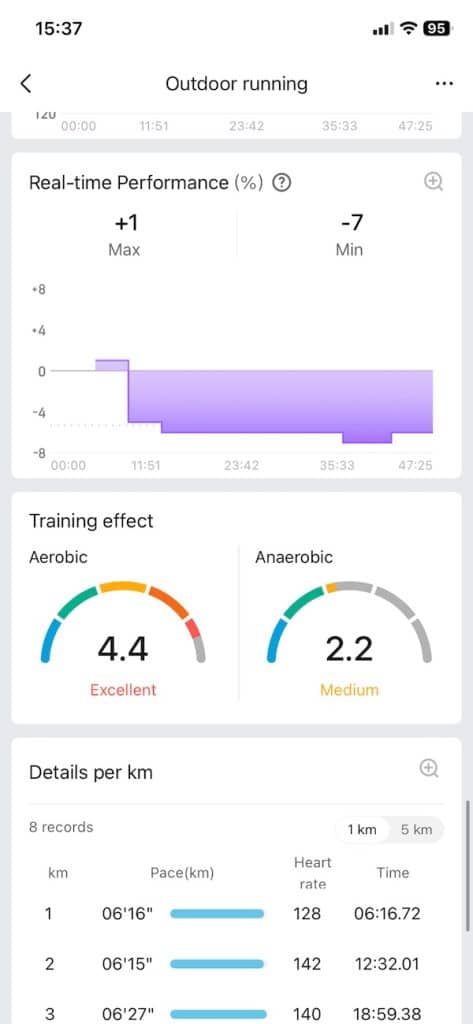
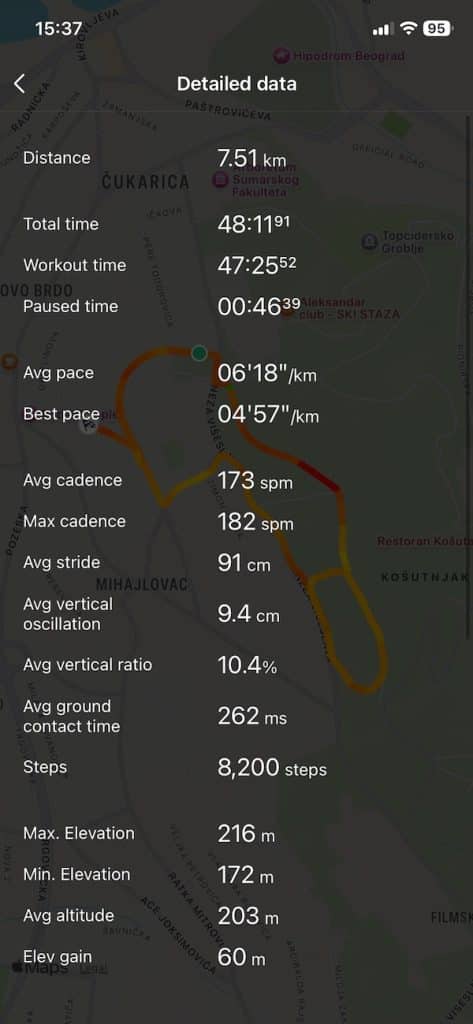



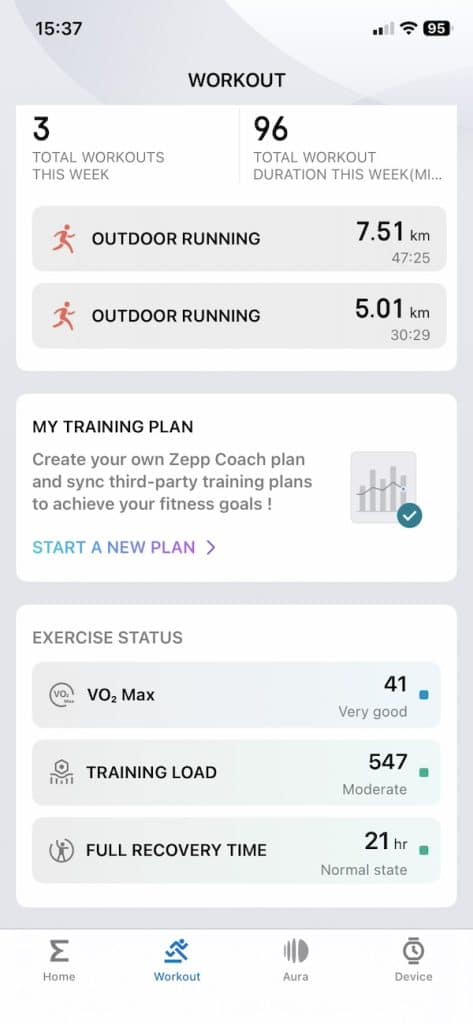
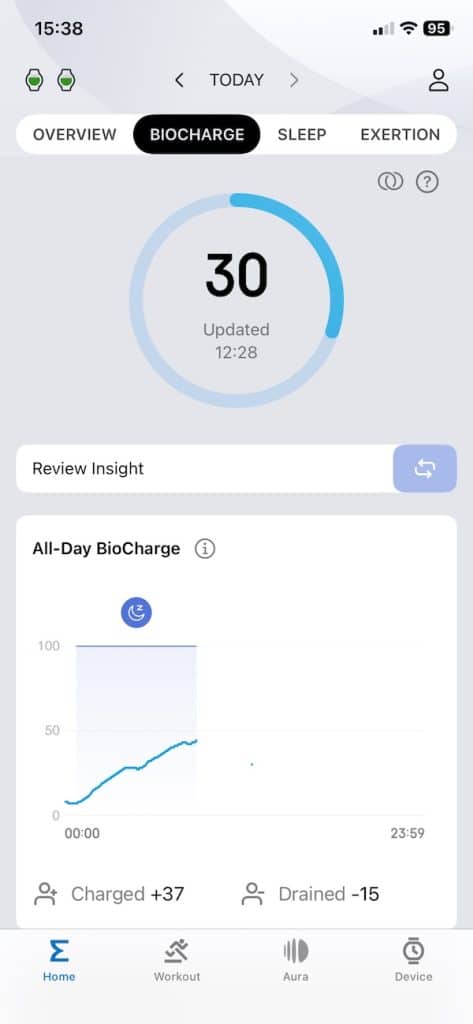
What continues to set Garmin apart is its platform depth. You get more advanced training analysis and better ecosystem integration. However, Zepp Health’s software has come a long way. The T-Rex 3 Pro now includes core running metrics like VO2 Max, Training Load, and Vertical Ratio, and it locks onto GPS satellites just as quickly. Heart rate performance is no longer a weak point. You can rely on the data without second guessing, and that changes how this watch stacks up.
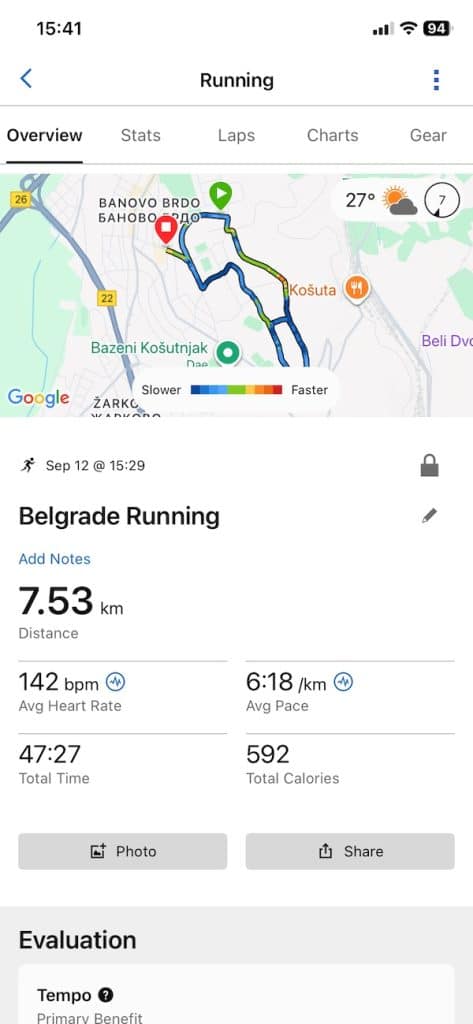
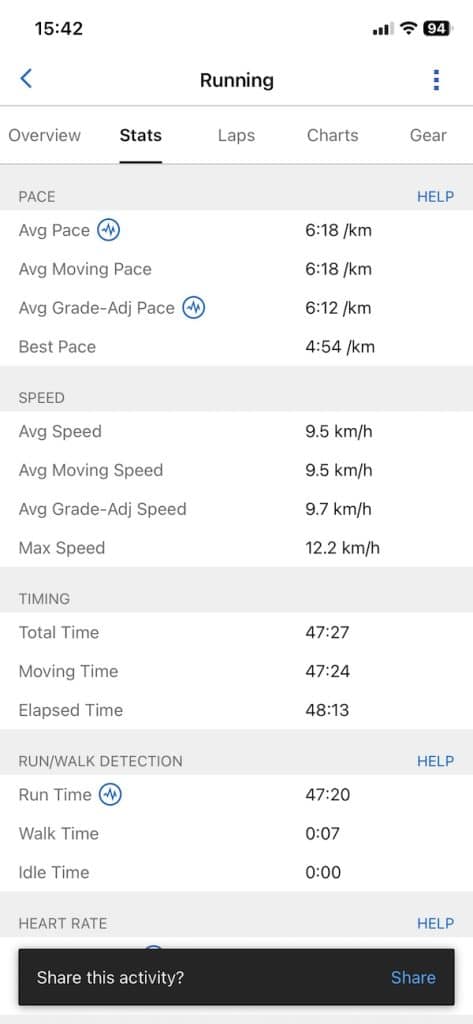
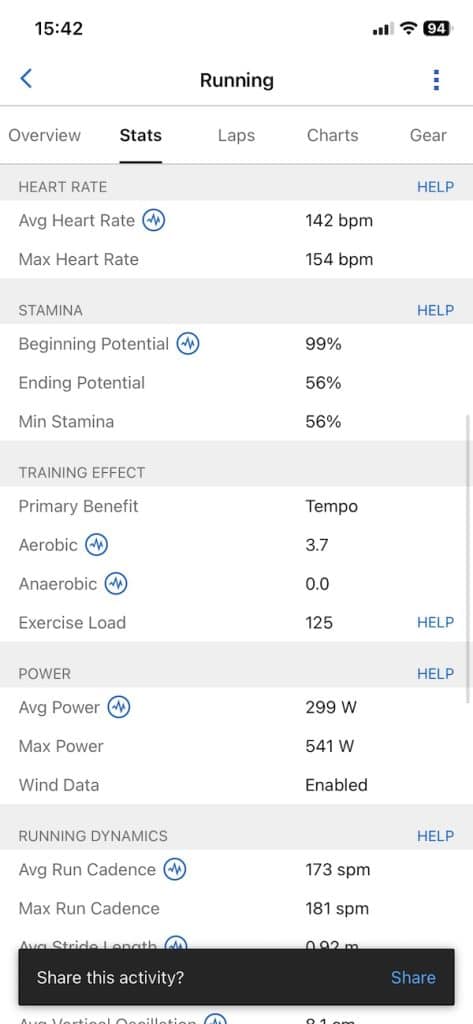
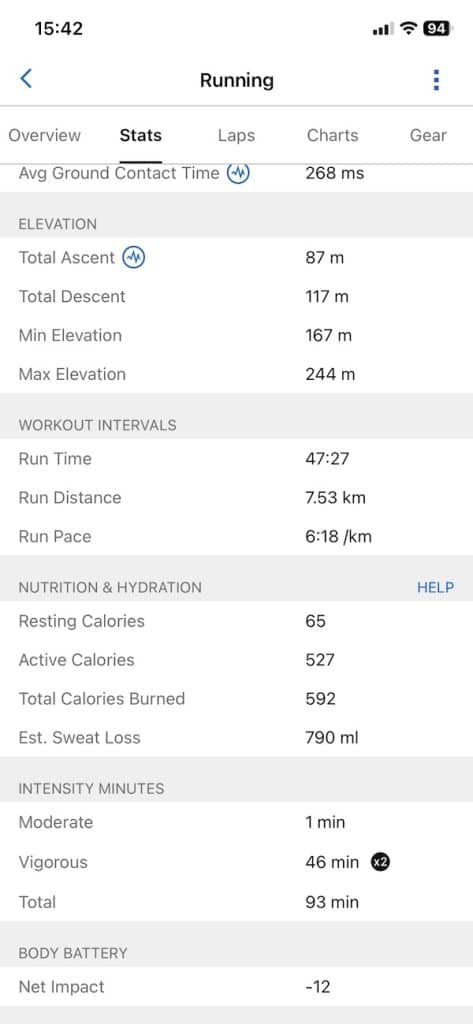

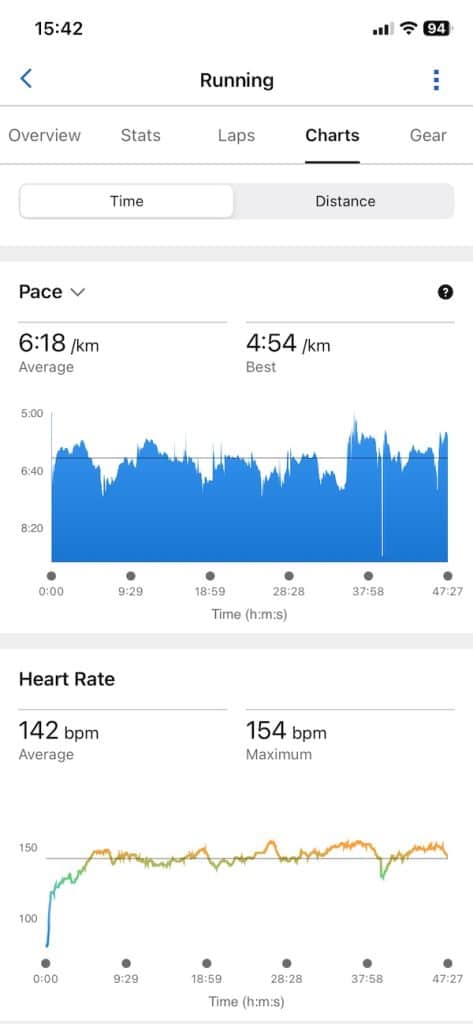
All of this makes the T-Rex 3 Pro the most accurate Amazfit I’ve used so far. And I’ve tested a few. If you’re looking for reliable data and can handle the 48mm size, it’s a surprisingly capable training companion. A 44mm version is coming soon, but for now, the larger model holds its own even against Garmin sports watches.
Maps
Like the standard version, the T-Rex 3 Pro supports offline maps, but it goes a few steps further. You still get Base Maps, Contour, Ski Resort and Turn-by-Turn navigation. But the Pro adds a full suite of extras: POI search, route planning, round-trip routing, and even auto rerouting if you stray off course. That makes it a more complete navigation tool, especially for longer hikes or unfamiliar terrain.
Downloading maps is straightforward. Just connect the watch to Wi-Fi and manage everything through the Zepp Health app. You can pick regions or specific map types to install, and they get stored locally on the watch.
Once you’re navigating, zooming is handled via the + and – signs, using the left-side buttons. A long press on the top right button opens the map settings menu, where you can switch between light and dark mode or let it auto-switch depending on time of day. Dark mode works well for night use, while the lighter theme is easier to read in bright sun. Exiting maps is as simple as hitting the Back button.
Amazfit T-Rex 3 Pro review: Smart features
Finally, we get to smart features. You are probably not buying the T-Rex 3 Pro for those, but they are worth a look.
This is a device that doesn’t try to be a full-on smartwatch, and that’s probably a good thing. What you get is a focused set of tools that cover the basics without going overboard. Think of it more as a fitness watch that runs a lightweight operating system.
Music playback is built in. You can load up songs directly onto the watch and leave your phone at home. There’s no Spotify app here, so if you rely on streaming, you’ll need to look for a third-party workaround. A few exist, but keep expectations low.
Contactless payments are also available, depending on where you live. Zepp Pay supports Mastercard and works across much of Europe. If your bank’s not on the list, the Curve app can act as a bridge to make payments possible. Unfortunately, US support is still a no-show. Notifications come through reliably, and the built-in apps like weather and alarms get the job done. There’s also a small collection of extras you can add from the Zepp Health app. Nothing groundbreaking, but you’ll find a few useful bits.
One thing that’s changed from the regular T-Rex 3 is the addition of a speaker. That unlocks Bluetooth calling directly from the wrist and gives you audible alerts instead of just buzzes. It’s not something I use all the time, but it’s nice to have the option. The interface itself runs on Zepp OS 5.0, which is slick and lightweight. Everything loads fast and stays battery-friendly.
The offline voice assistant is still here, and it’s more capable than you’d expect. It runs entirely on the device, so no internet needed. You can use it to start workouts, adjust settings, or pull up apps. If you forget what it understands, there’s a quick command guide right on the watch. You won’t be chatting with Alexa or Google, but for quick tasks, it actually works surprisingly well.
LED flashlight
And then there’s the flashlight. Make not mistake, this is more than a minor addition. It uses a real LED housed on the top edge of the watch case rather than relying on a screen-based workaround. This lets it cast light forward while the display stays fully readable. Whether you’re trail running in the dark, setting up camp after sunset, or navigating through your home during a blackout, it’s always there on your wrist without needing to reach for a phone or headlamp.
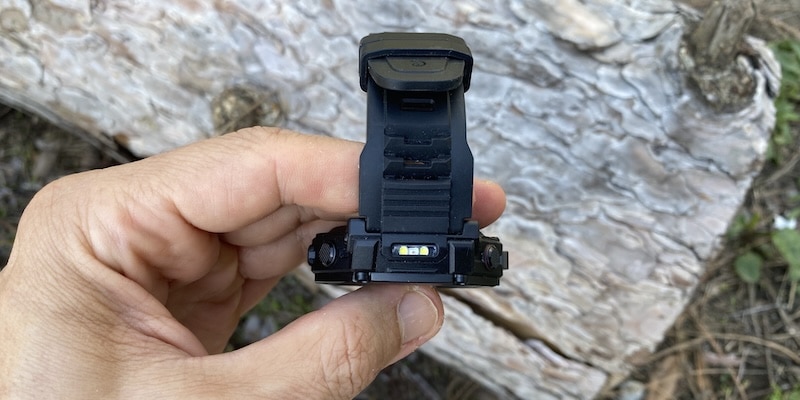
There are multiple modes to fit different scenarios. The white LED offers three brightness levels, plus an intense Boost Mode that hits 300 lux for short bursts. There’s also a red light mode for low-disruption navigation in the dark and an SOS option with flashing patterns. You can toggle the light using a long press of the top-left button or from the quick settings panel, and once it’s on, button presses cycle through the modes.
This feature is only available on the Pro version, not the standard T-Rex 3. After a few uses, the convenience becomes obvious. It’s not a flashy addition meant to grab attention. It’s practical, well integrated and surprisingly handy. Garmin users already familiar with this type of flashlight will appreciate the functionality, and Zepp Health’s take on it fits well into the rugged, outdoorsy design of the T-Rex 3 Pro.
*We are a review site that receives a small commission from sales of certain items, but the price is the same for you. Purchasing items by clicking on links in this article allows us to run this website. We are independently owned and all opinions expressed here are our own. See our affiliate disclosure page for more details.
Like this article? Subscribe to our monthly newsletter and never miss out!

